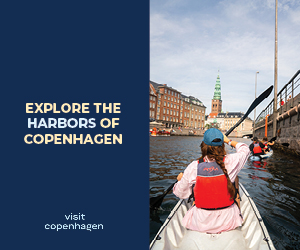As the world of sport knows, maintaining camaraderie alongside competitive spirit is no mean feat, especially when the competition is between cities or nations. An environmental award, on the other hand, has as its aim to show that cooperation and competition don’t have to be mutually exclusive, and that even the greatest can benefit from a little healthy rivalry.
The European Green Capital Award is an inter-city contest created by the European Commission to reward environmental achievement and promote best practice in urban living. It was awarded for the first time this year to Stockholm, and Hamburg will wear the crown in 2011. Already the shortlist for 2012 and 2013 has been drawn up, consisting of six cities: Barcelona, Malmö, Nantes, Nuremberg, Reykjavik and Vitoria-Gasteiz.
Four out of five Europeans now live in towns or cities and, with growing populations, the urban lifestyle faces big environmental and sustainability challenges. Many cities are already rising to these challenges, especially in the areas of transport, green spaces and clean air. The Green Capital Award aims to celebrate these initiatives and encourage potential projects. The candidate cities are not just assessed on their current performance, but on their future commitments and plans to disseminate their experience to other cities. To be considered, they need to be role models as well as high achievers, and this is reflected in the judges’ assessment in each of eleven environmental indicators.
This consideration of the future has another purpose. By including merit for forthcoming plans, the award aims to create a more level playing field and eliminate possible discrimination against cities that haven’t had the best environmental start in life.
Already the selection of the first two winning cities has demonstrated this element of fairness. Stockholm is an obvious green beauty queen: known as the Venice of the North, the city is composed of a series of connected islands. Parks and tree-lined streets are common, and water is always nearby, with 24 official bathing beaches within the city’s boundaries. The city went through a dramatic clean-up in the 1970s, and this continues today with a campaign that enlists citizens to help keep the city clean. Stockholm has already achieved a 25% decrease in emissions since 1990, and aims to be totally fossil-fuel free by 2050. One of the main contributors to this reduction is a district heating initiative, where heat for residential or commercial areas is produced centrally. Not only is this more efficient but, in Stockholm, 80% of the district’s heating is produced from renewable fuel or energy from waste or residual heat.
Other contributors are stockholm’s four-year-old congestion charge and reliable public transport system, where all inner-city buses run on renewable fuels and subways and commuter trains on renewable electricity. A new tramway will open during 2010, and an initiative has just been installed to use body heat generated by travellers in the central station to warm nearby buildings. The city has a good record of translating ambitious projects into reality, and is also now successfully producing biogas from organic waste to fuel cars and buses.
In terms of size and industry, Hamburg may not seem a likely winner, but the city scored more points than Stockholm in the award’s evaluation. With 1.8m inhabitants, it is Germany’s second-largest city and a major port on the River Elbe. It faces numerous urban challenges such as a lack of space and pollution but, although it has high per capita emissions, there has been a more than 15% reduction of these since 1990, and it aims to reduce the figure by another 80% by 2050. Hamburg is Europe’s second-largest port in terms of the number of containers it handles, a number that rises every year. Yet the city’s overall emissions from transport have remained remarkably stable, and the need for greater capacity is met by more efficient land use rather than expansion.
Almost all citizens have public transport within 300 metres, and the city uses measures such as car-free Sundays, with free public transport. The city also has an impressive cycling network and an interconnected system of green spaces. However, probably where Hamburg scored the most points was on its dissemination programme, which has a ‘train of ideas’ at its centre. This will take the form of a mobile exhibition that will show best-practice projects around Europe. The intention is that other European cities will present ideas in each wagon, and the train will spread these ideas before returning to Hamburg.
Already the competition is showing its cooperative side. Stockholm has put in place a programme for professionals to visit the city to learn about its sustainability solutions. It will hold a series of fifteen workshops and seminars throughout 2010 on a range of sustainability issues, and will host the European Green Capital Conference, which will act as a central exchange of sustainability know-how. In November 2009, Hamburg hosted the City Climate Conference where nearly 300 cities signed a Declaration on Climate Protection. This pledged the cities to halving their greenhouse-gas emissions by 2050, and increasing their renewable energy use by 80%. The award has also established a link with a similar contest held in Japan called the Eco Model City Project, which selects six Japanese cities as showcases for the promotion of a low-carbon society.
Although the award is for candidates within the European Union, the learning from role models and the cooperation between cities is spreading worldwide, as evidenced by the C40 Large Cities Climate Leadership Group. Hopefully, by incorporating collaboration into the award’s winning criteria, urban tribes will be able to celebrate their green identity without having to fight over it.
The winners for 2012 and 2013 will be announced in late October this year in Stockholm.
European Green Capital Award Environmental Indicators
The evaluation panel will base its assessments on the following indicator areas:
• Local contribution to global climate change
• Local transport
• Green urban area
• Sustainable land use
• Nature and biodiversity
• Quality of local ambient air
• Noise pollution
• Waste production and management
• Water consumption
• Waste water treatment
• Environmental management of the local authority










